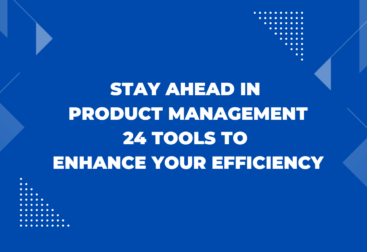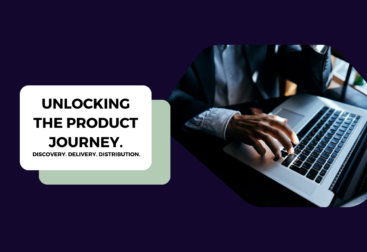In today’s rapidly evolving market, understanding your customers’ needs, preferences, and behaviors is more crucial than ever. User research is the backbone of product development, ensuring that the end product aligns with the users’ expectations and solves their problems effectively. As a Product Manager, your role is pivotal in steering the product direction based on solid user insights. This blog explores the essential aspects of user research, its significance, methodologies, and how to implement findings to create successful products.
Understanding User Research
User research involves various techniques to gather data about users’ needs, behaviors, and motivations through observation and feedback. This research helps Product Managers to create user-centric products that enhance user satisfaction and loyalty. The primary goals of user research include:
- Identifying User Needs: Understanding what users need and expect from your product.
- Uncovering Pain Points: Identifying any challenges or issues users face when interacting with similar products.
- Validating Ideas: Ensuring that your product ideas align with user expectations and solving real problems.
- Improving Usability: Enhancing the product’s usability by understanding how users interact with it.
Why User Research Matters?
- Informed Decision-Making: User research provides data-driven insights that help Product Managers make informed decisions rather than relying on assumptions.
- Enhanced User Experience: Understanding user needs and pain points leads to the development of products that offer a superior user experience.
- Increased Product Adoption: Products that resonate with users’ needs are more likely to be adopted and recommended, leading to higher market penetration.
- Competitive Advantage: User research helps in staying ahead of competitors by continuously adapting to changing user preferences and market trends.
- Risk Mitigation: By validating product ideas and features through user feedback, the risk of product failure is significantly reduced.
Types of User Research
User research can be broadly categorized into qualitative and quantitative research. Each type serves different purposes and provides unique insights.
Qualitative Research
Qualitative research focuses on understanding the underlying reasons and motivations behind user behaviors. It involves open-ended questions and unstructured data collection methods. Common qualitative research methods include:
- Interviews: Conducting one-on-one interviews to gather in-depth insights into user experiences, needs, and pain points.
- Focus Groups: Facilitating group discussions to explore users’ attitudes, perceptions, and ideas about the product.
- Observations: Observing users in their natural environment to understand how they interact with the product.
- Diary Studies: Asking users to maintain a diary to record their interactions and experiences with the product over a period of time.
Quantitative Research
Quantitative research involves structured data collection methods that produce numerical data. This type of research is useful for identifying patterns and making statistical inferences. Common quantitative research methods include:
- Surveys: Distributing questionnaires to a large audience to gather data on user preferences, behaviors, and satisfaction levels.
- Analytics: Analyzing user data from web and mobile analytics tools to understand user behavior and engagement patterns.
- A/B Testing: Comparing two versions of a product or feature to determine which one performs better based on user interactions.
- Heatmaps: Visualizing where users click, scroll, and spend the most time on a webpage or app to identify usability issues and popular features.
Conducting User Research: Step-by-Step Guide
Conducting effective user research involves several steps, from defining objectives to analyzing data and implementing findings. Here’s a step-by-step guide for Product Managers:
1. Define Research Objectives
Start by clearly defining the objectives of your user research. What do you want to learn? Are you looking to understand user needs, validate a new feature, or improve usability? Defining clear objectives will guide the entire research process and ensure you collect relevant data.
2. Choose the Right Methodology
Based on your research objectives, choose the appropriate research methodologies. For exploratory research, qualitative methods like interviews and focus groups are ideal. For validating hypotheses or measuring user behavior, quantitative methods like surveys and A/B testing are more suitable.
3. Recruit Participants
Recruiting the right participants is crucial for gathering meaningful insights. Identify your target user segments and use various recruitment methods like user panels, social media, and professional networks to find participants who represent your user base.
4. Conduct the Research
Execute the chosen research methods systematically. Ensure that the environment is conducive to open and honest feedback, and be prepared to adapt your approach based on the participants’ responses.
5. Analyze the Data
Once you’ve collected the data, analyze it to identify patterns, trends, and key insights. For qualitative data, look for recurring themes and sentiments. For quantitative data, use statistical tools to analyze the results and draw conclusions.
6. Synthesize Findings
Synthesize the findings from your research to create a comprehensive understanding of your users. Combine insights from different research methods to validate your conclusions and provide a holistic view of user needs and behaviors.
7. Implement Insights
Translate your research findings into actionable insights. Prioritize the identified user needs and pain points, and incorporate them into your product development roadmap. Ensure that the entire product team is aligned with the user research insights and works collaboratively to implement the necessary changes.
8. Iterate and Validate
User research is an ongoing process. Continuously iterate on your product based on user feedback and validate the changes through further research. This iterative approach ensures that your product remains relevant and continues to meet user needs over time.
Best Practices for Effective User Research
To maximize the effectiveness of your user research, consider the following best practices:
- Involve Stakeholders: Engage key stakeholders from the beginning to ensure their buy-in and support for the research process.
- Use a Mix of Methods: Combine qualitative and quantitative methods to gather comprehensive insights and validate findings.
- Create User Personas: Develop detailed user personas based on research insights to guide product development and decision-making.
- Communicate Findings: Share research findings with the entire product team and other relevant stakeholders to ensure everyone is aligned.
- Be Ethical: Ensure that user research is conducted ethically, with respect for participants’ privacy and consent.
Final Words
User research is an essential component of successful product management. By understanding your users’ needs, behaviors, and pain points, you can create products that offer a superior user experience and meet market demands. As a Product Manager, investing time and resources in user research will not only lead to better product decisions but also increase user satisfaction, loyalty, and overall business success. Remember, the key to effective user research is continuous learning and iteration, ensuring that your product evolves with your users’ changing needs and preferences.












